The final design studio associated with Monsoon Assemblages is nearing its end. On the 11th April the students of Design Studio 18 had their last review for the year, with just portfolio submissions remaining. The end of the year will bring to a close the experiment of associating an architectural design studio with a grant funded research project. In 2016/17, the studio worked in Chennai framed by a transect walk across the Pallikaranai Marsh; in 2017/18 it worked in the delta zone of Bangladesh. In 2018/19, the studio in Myanmar was framed by the idea of non-human agency. These methodologies and their outcomes will be reflected on in a more formal manner in a research paper. However, for now, it is worth recording what arose in the concluding discussions of the morning and the afternoon sessions of this year’s final review.
We had a fantastic group of reviewers, which included practicing architects, academic architects and former students of DS18: Richard Portchmouth from Birds Portchmouth Russum, Nick de Klerk from Aukett Swanke and Alex Gordon from Jestico + Whiles; Susannah Hagan (Professor Emeritus, UoW), Jon Goodbun (RCA), Juan Pinol (UoW), Richard Doffird (UoW) and Tumpa Fellows (UoW); and Lauran Nica, Clavin Sin and Alice Thompson, former DS18 students.
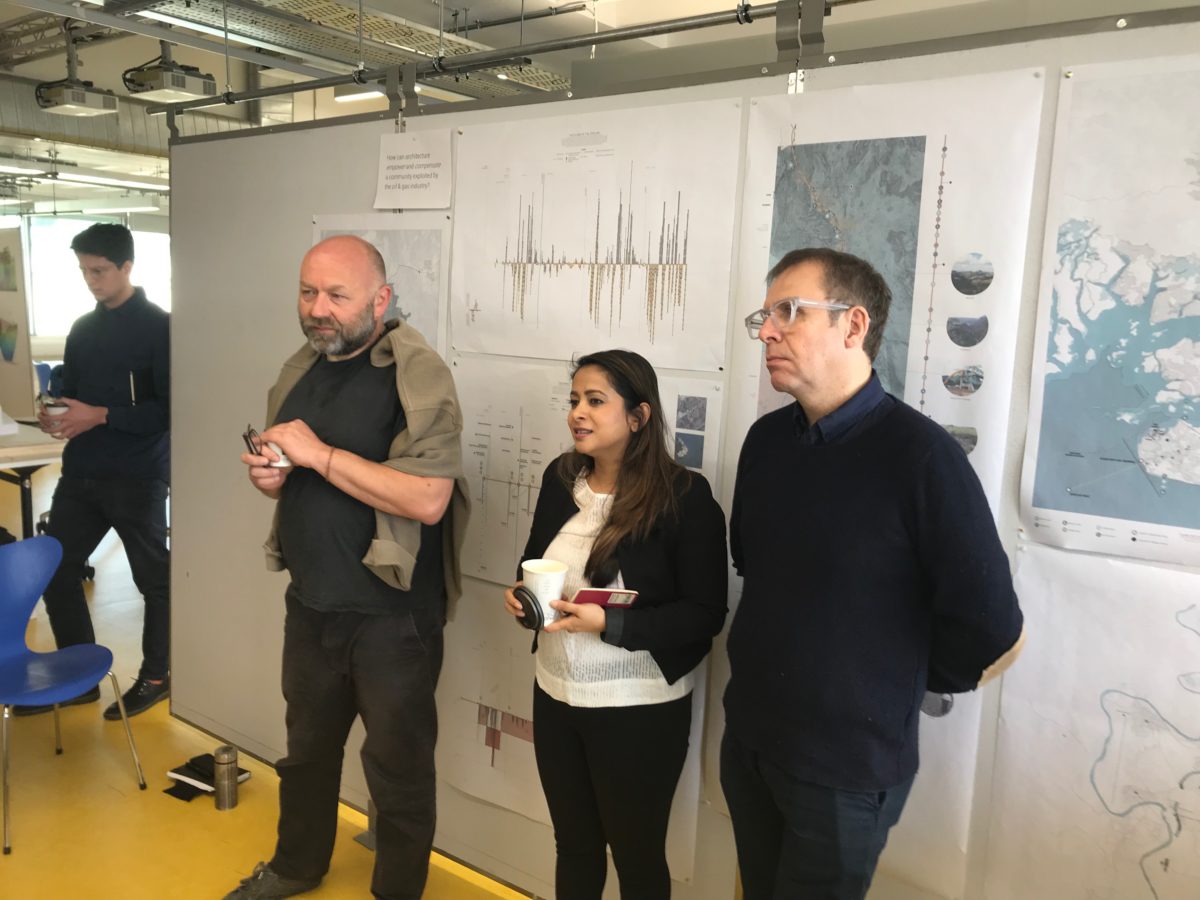
Jon Goodbun, Tumpa Fellows, Juan Pinyol
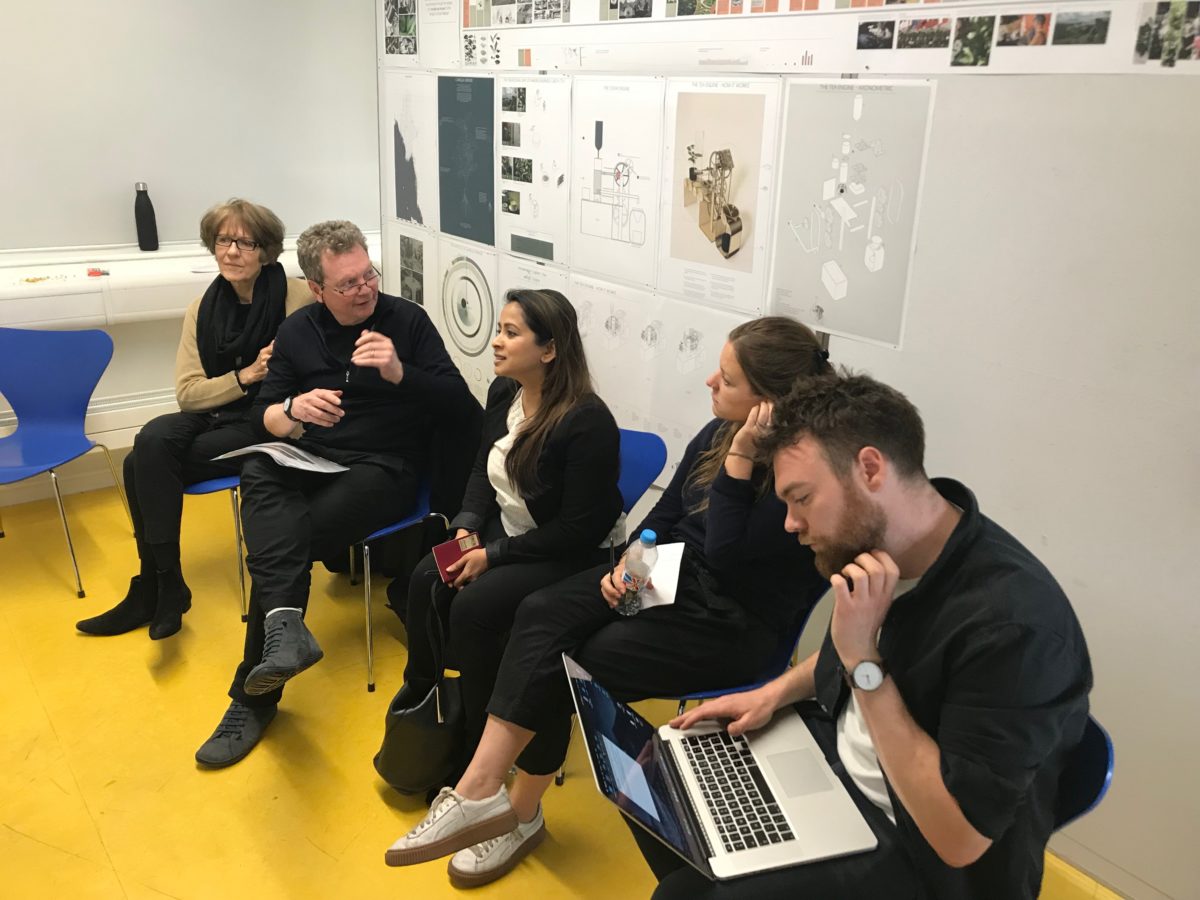
Susannah Hagan, Richard Portchmouth, Tumpa Fellows, Alice Thompson, John Cook
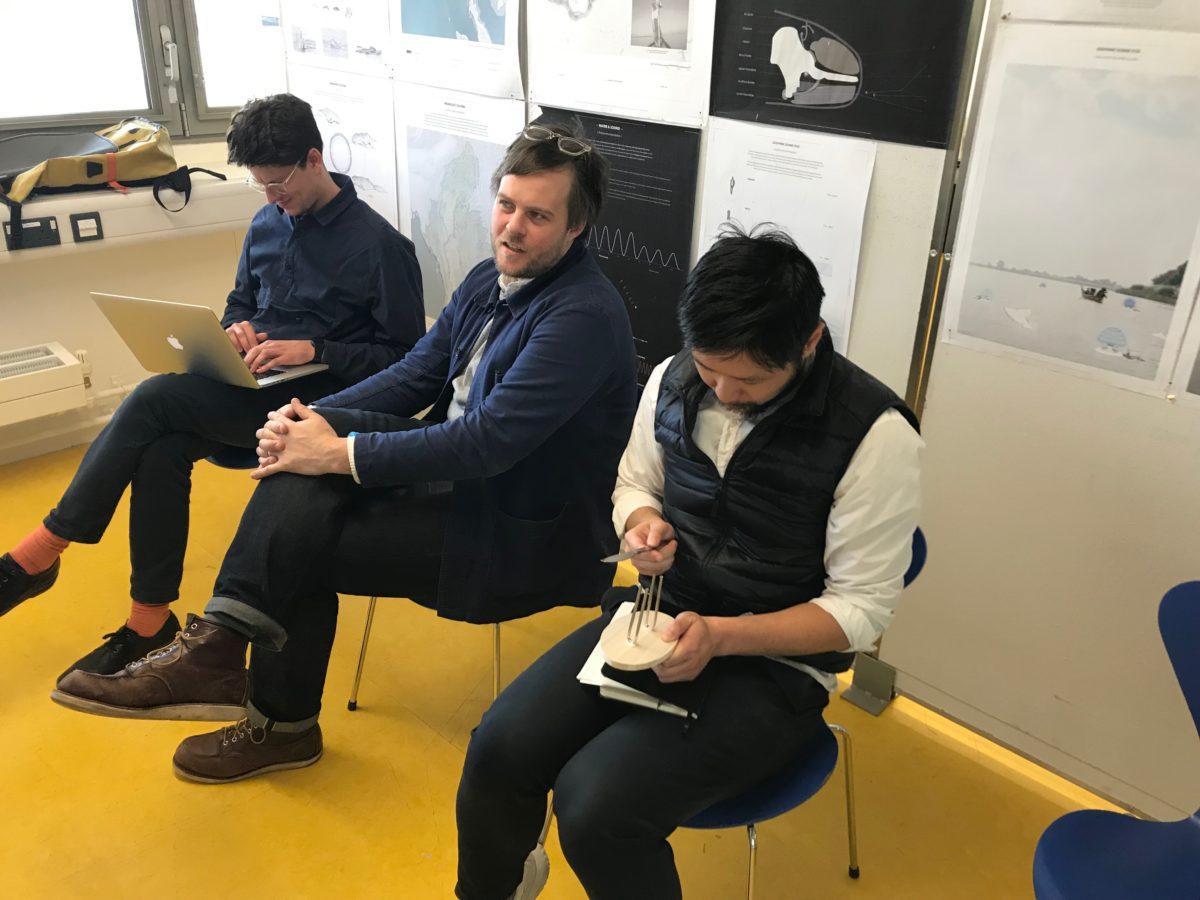
Ben Pollock, Alex Gordon, Calvin Sin
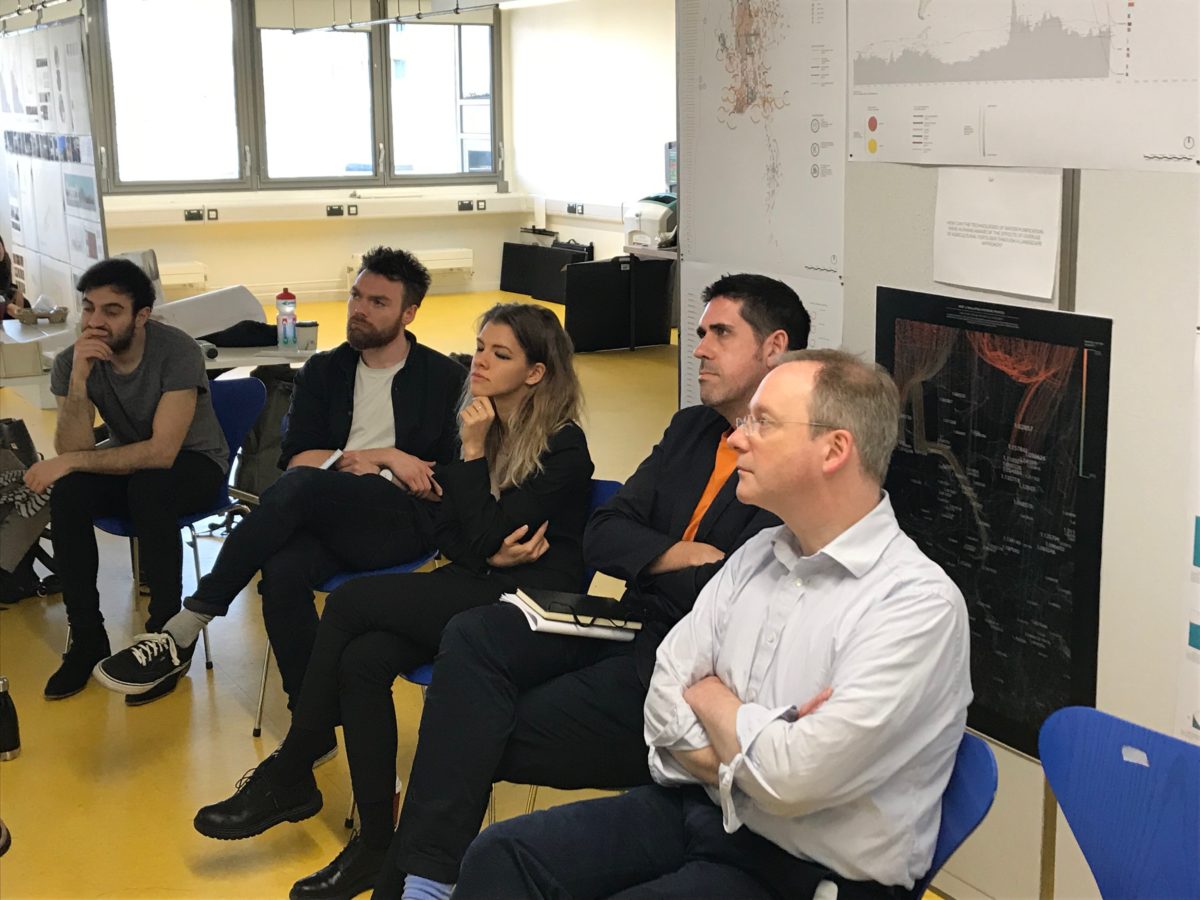
Omar Manshi, John Cook, Laura Nica, Nick de Klerk, Richard Difford
Comments from reviewers fell into three broad areas:
Design as research: In this review, students had been asked to begin their presentations with a ‘How can architecture …’ kind of research question to frame their projects and the reviewers’ responses to them. This was useful for a number of reasons. The articulation of a question forced students to think about the main drivers of their projects and whether they had in fact addressed them. It also provided a conceptual link between design and research, helping students to understand that design is research. The questions were useful in facilitating links between first and second semester work. These often appear to be structured, in students’ minds anyway, around ideas that semester 1 = research and semester 2 = design. This is of course false, but difficult to find methods to enable students to see the interchangeability of research and design – that research is a design process and that design is research. The research question seems to be a useful device to do this. Reviewers all felt however that the manner in which students had phrased their questions was often limited and failed to grasp the wider questions at stake in their work – questions about architecture itself, about what it means to conduct design based research at a distance, questions of scale and agency.
Scale: The second set of issues the studio raised were questions of scale. DS18 has always worked across scales usually considered to be too large (the territory) and too small (the particle) to constitute valid questions for architecture. This is one of the experiments it has been conducting since the start of the studio in 2013, and been its hallmark. Reviewers were of the view that in many cases, this was lost when students got to the architectural scale. They encouraged students to make all scales apparent in their architecture – not to forget, when designing at a building scale, about what was at stake at territorial and particulate scales, and to make these apparent.

Rachel Wakelin’s tropospheric bird sanctuary
Context: The third set of questions raised related to what it meant to make a project at a distance for sites in Myanmar, and whether the work might not take on the opportunities, paradoxes and contradictions that this raised. For instance, how were students’ experiences on the field trip inflected in their work? How were these experiences conveyed? How had their projects responded to site, to culture, to socio-political conditions? What connections were they making between the situated-ness of the work in Myanmar and the context of a school of architecture in London? How might historic and contemporary connections between the two sites inform the work? How might disconnects be productive and for whom?
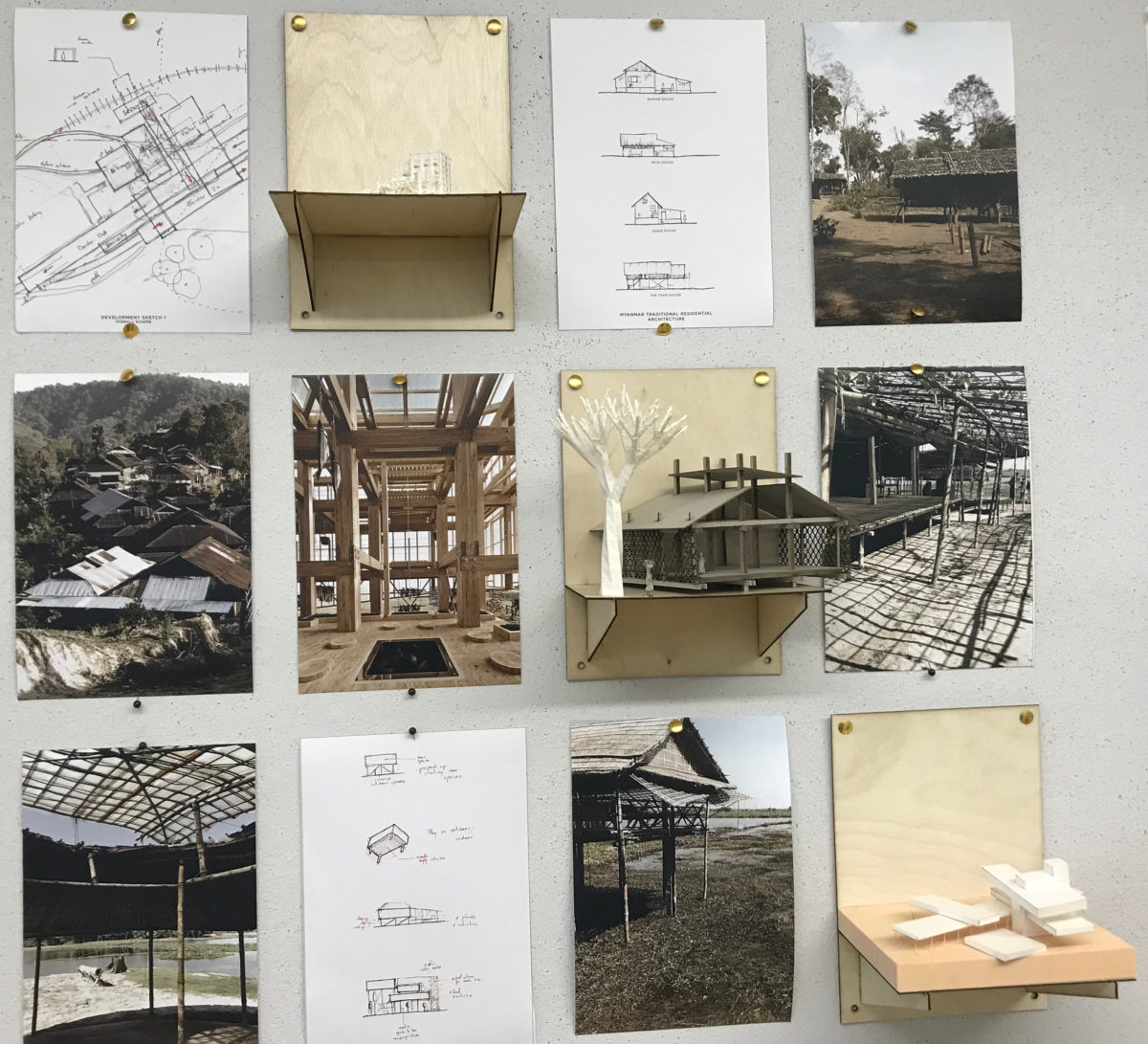
Thomas Blain, forest border post
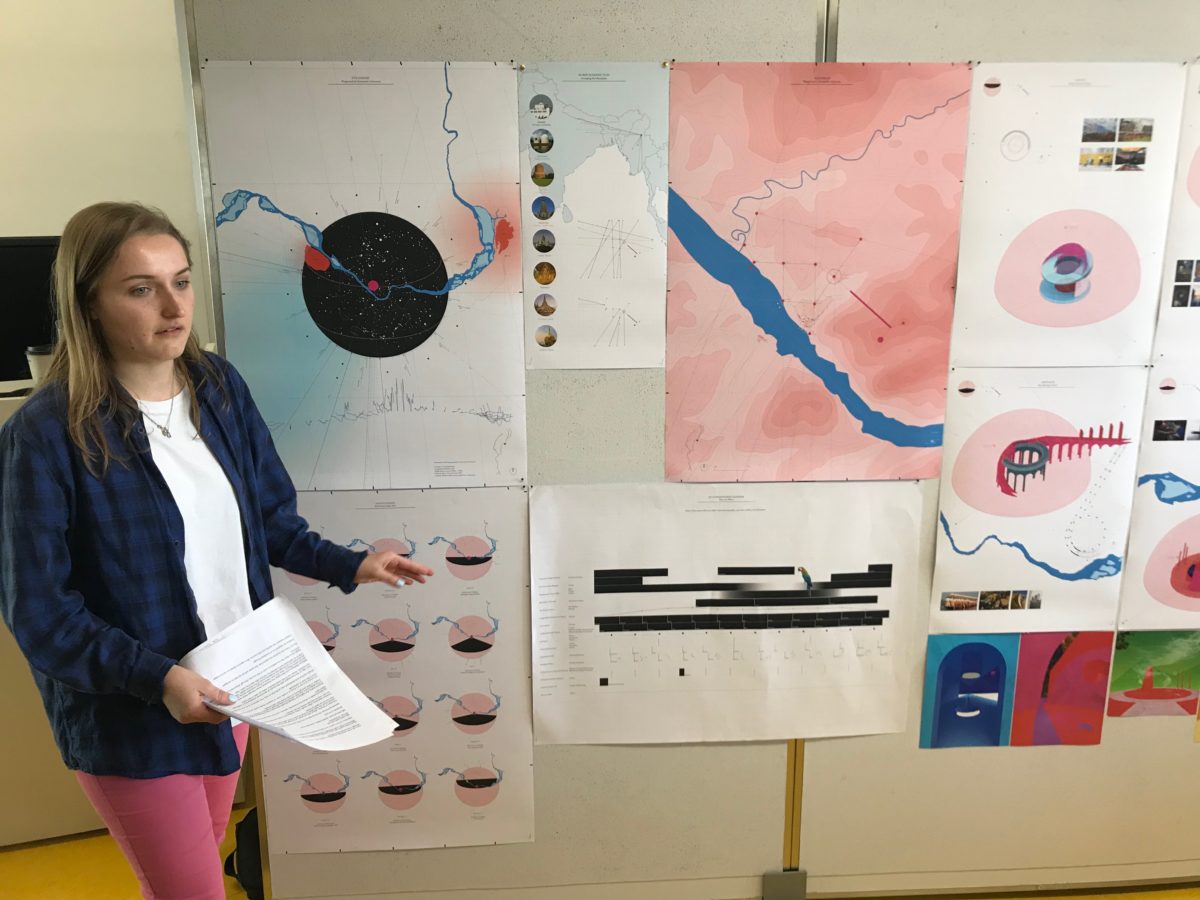
Aimee Daniels, Buddhist pilgrimage at the Second Defile of the Irrewaddy
Reviewers who had been at former DS18 reviews were complementary that this studio had, more than other studios in the past, succeeded in not only raising, but also addressing these three sets of issues – those of continuity between research and design, across scales and between places.
At the final Monsoon Assemblages Exhibition, which will take place at the University of Westminster in March 2021, samples of work from all three MONASS studios will be exhibited. At that time we will convene a Panel Discussion on these and other questions that the studios have raised. We look forward to continuing the conversation then!
Thank you to the reviewers for their time and insights.
Lindsay Bremner, PI Monsoon Assemblages, Tutor of DS18 (with John cook and Ben Pollock)
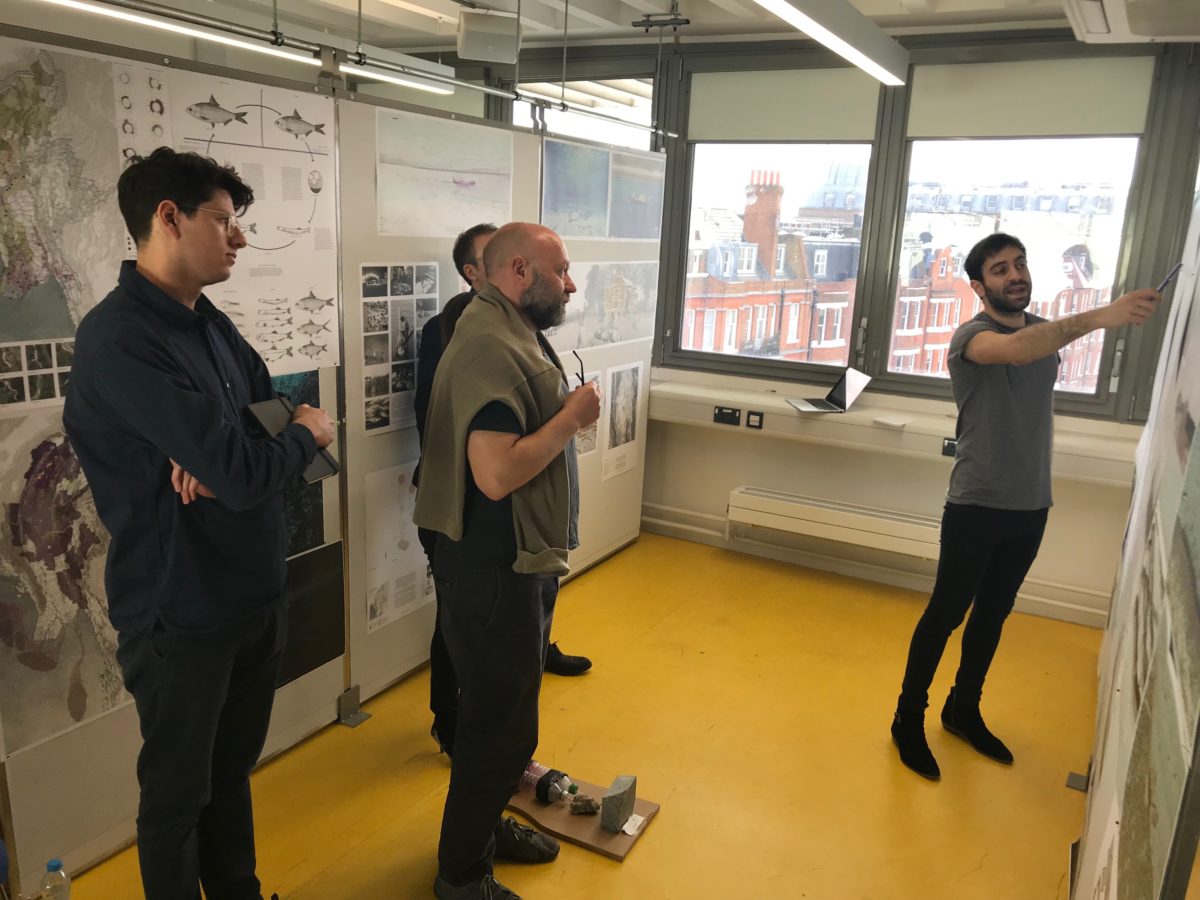
Omar Manshi explaining his hilsa fish project to Jon Goodbun, Juan Pinyol and Ben Pollock
